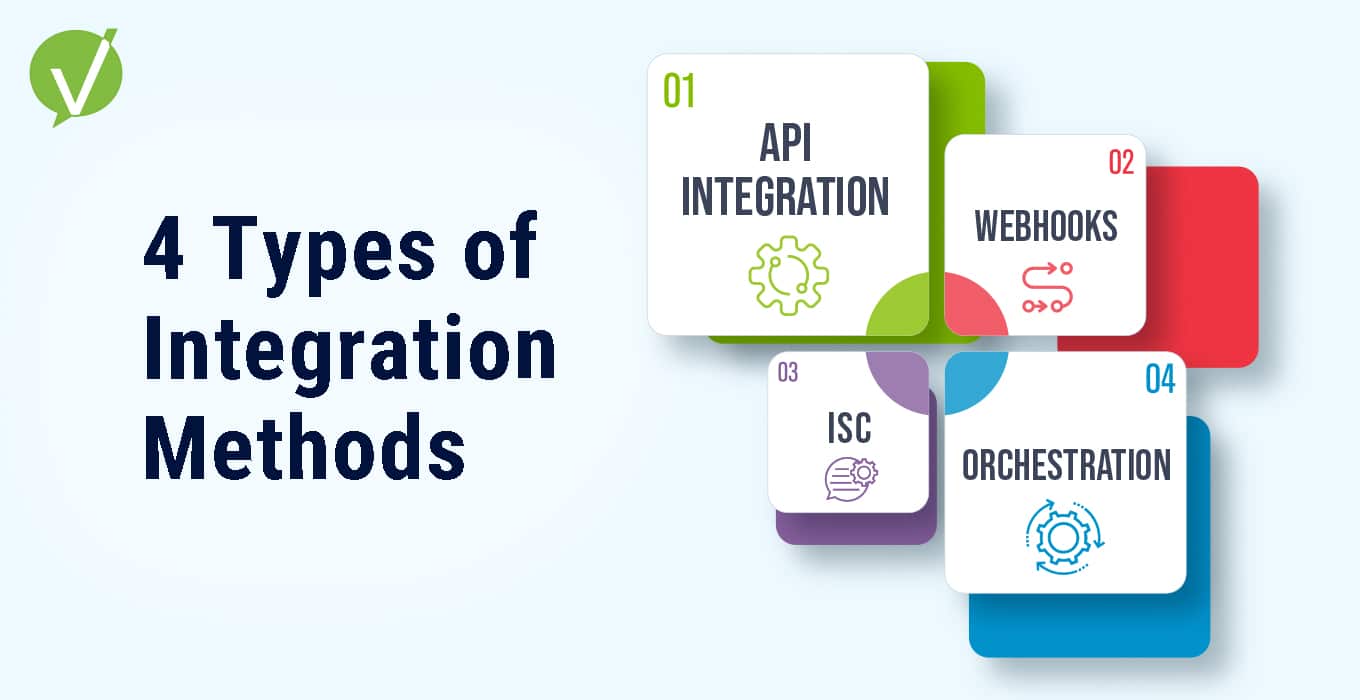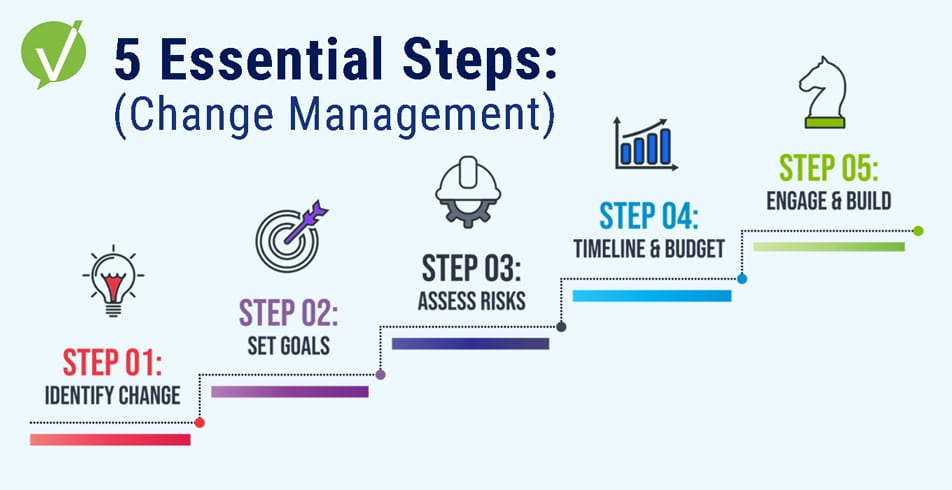4 Types of Integration Methods with Your Service Management Software
IT Service Requires More Than One Integration Tool
JIRA, Active Directory, and Beyond Trust (formally Bomgar) are a few examples of many third-party services and technology that can help your team by providing outsourced IT service. Using these tools in concert with each other is vital to getting the service data your team needs. So, when considering an ITSM platform, it is critical to understand the availability of integrations.
But what are the differences between the types of software integration tools out there? Here are the 4 major types of third-party integration methods available for service management software along with the pros and cons of each for your service team.
1. API Integration
Application Programming Interface (API) is the most common tool for connecting different applications for service management software. There are many different types of API that are either public, partner, or private. What they all have in common is how they enable interaction between applications. An API uses a common code language to specify functionality and set protocols. This gives your applications the ability to transfer data.
Pros:
- Highly Flexible: Even though you are dependent on the developer resources, specific data becomes highly flexible because the integration uses product code.
- App Changes Aren’t Disruptive: Service providers offer better functionality that goes uninterrupted since APIs are often limited in scope.
- Widely Available: As stated earlier, API is the most common tool for third-party integration. So, it will be unlikely that you run into a service that won’t offer API integration options.
Cons:
- Dependent on Vendor: Vendors are responsible for creating APIs. So, you are reliant on the vendor to create APIs for the specific type of information you are trying to pull.
- Code-Intensive: Because they are code-based, APIs need an understanding of programming languages to install.
2. Webhooks
Webhooks or HTTP callbacks are an alternative to API integration. They are both tools that link to a web application but have two key differences. For webhooks, implementation is often not code-based. They often have modules that are programmable within a web application. Instead of being request-based, webhooks are event-based. They only trigger when specific events occur within a third-party service.
Pros:
- Real-Time Data: Webhooks don’t use a request-based system. They allow your team to view data on a real-time scale.
- Supports Automation Efforts: Because data requests are event-based, you don’t have to set up poll timings to your data center. This can help streamline data flow and automation.
Cons:
- Limits Data Manipulation: A webhook requires the service to trigger a data transfer based on an update. In contrast to webhooks, APIs can list, create, edit, or delete an item without triggering a transfer.
3. ISC
Integration Services Component (ISC) lives on a local server unlike code-based integrations. The ISC creates a bridge with on-premise tools such as directories, asset management tools, and BI tools without the need for file imports.
Pros:
- (Near) Out-of-the-Box Solution: The ISC immediately offers many data synchronization options you would likely use.
- Wider Range of Functionality: With an ISC, you have complete data access that you can do anything with. Any data that you can access on the backend with your cloud service will be available.
Cons:
- Knowledge of Database Architecture Necessary: If you are unfamiliar with how your local database is set up, implementing an ISC will be challenging.
- Requires Access to the Backend of Your Applications: There will be many cases where backend access isn’t there for your team, so you won’t be able to use an ISC in those situations.
4. Orchestration
The most automated integration option is orchestrations. If you are not familiar with orchestrations, they refer to the process of automating multiple systems and services together. Teams will often use software configuration management tools such as PowerShell to build orchestrations. Software configuration management tools offer various methods such as snap-ins or hosting APIs to connect with applications to manage the automation workflow.
Pros:
- Full Automation: Automation across all processes.
- Manages Multiple Systems: Ability to manage the integrations of multiple systems collectively.
Cons:
- Code-Intensive: You need to have coding skills to manage your software configuration management tool.
- Labor-Intensive: Because the workflows are quite complex, the setup can be a drawn-out process. Also, any asset or process changes force you to check how it will affect your orchestrations.
Make sure you check what integration options your ITSM provider offers before you commit. With Vivantio, you have several options including our rapid integration platform, FLEXBridge.
Why Do We Need Software Integration?
Software integration is not just about connecting different IT services; it’s about creating a seamless and efficient ecosystem that can significantly improve service delivery and operational efficiency. The necessity of integrating various third-party services and technology highlights the importance of a strategic approach to software integration.
How to Implement Software Integration
Implementing software integration successfully involves a series of steps that ensure a smooth transition and operational efficiency. This process requires a strategic approach, tailored to meet the specific needs of your organization and the objectives you aim to achieve through integration. Follow these steps to implement software integration effectively:
- Identify Integration Needs: Start by assessing your organization’s specific needs. Determine which systems need to be integrated and why. This could involve improving data flow, enhancing user experience, or automating processes.
- Define Your Integration Objectives: Clearly outline what you hope to achieve with your integration efforts. Objectives may include increasing productivity, reducing manual data entry, or improving data accuracy.
- Evaluate Integration Tools and Platforms: Research and evaluate the various integration tools and platforms available. Consider factors such as compatibility with existing systems, scalability, ease of use, and cost.
- Choose the Right Integration Method: Select the integration method that best fits your needs, whether it’s API integration, webhooks, ISC, or orchestrations. Consider the pros and cons of each method as it relates to your specific objectives.
- Develop a Project Plan: Create a detailed project plan that includes timelines, milestones, roles and responsibilities, and budget. Ensure all stakeholders are informed and involved in the planning process.
- Test the Integration: Before full implementation, conduct thorough testing of the integration in a controlled environment. This will help identify any issues or adjustments that need to be made before going live.
- Implement the Integration: With testing complete and adjustments made, proceed with the implementation of the integration. Ensure that all team members are trained on any new processes or changes to existing workflows.
- Monitor and Optimize: After implementation, continuously monitor the integration to ensure it is functioning as intended. Be prepared to make adjustments as needed to optimize performance and meet evolving organizational needs.
- Document Everything: Keep detailed documentation of the integration process, including the tools used, configurations, and any issues encountered. This documentation will be invaluable for troubleshooting and future integration projects.
- Seek Feedback and Improve: Gather feedback from users and stakeholders on the effectiveness of the integration. Use this feedback to make continuous improvements and adjustments to ensure the integration remains aligned with organizational objectives.
Following these steps can help ensure a successful software integration process, enabling your organization to achieve its desired outcomes while minimizing disruptions and maximizing efficiency.
How Do You Design a Software Integration Strategy?
Designing an effective software integration strategy is crucial for maximizing the benefits of integrating various IT services. It involves assessing your current IT infrastructure, understanding your integration needs, and selecting the right tools and approaches to meet those needs.
Native Software Integrations vs. iPaaS
In the context of software integration, it’s important to understand the difference between native software integrations and Integration Platform as a Service (iPaaS). This distinction can help you choose the most appropriate integration approach for your business needs.
Best Practices for Integration Software
Adopting best practices for integration software is essential for ensuring successful integration projects. These practices include thorough planning, selecting the right tools, and continuous monitoring and optimization of your integration processes.
Software Integration Overview
A comprehensive overview of software integration encompasses understanding the types of integration methods available, their pros and cons, and how they can be effectively implemented and managed. This knowledge is crucial for any ITSM platform considering the integration of third-party services and technology.
Discover for yourself how Vivantio service management software offers codeless integrations, customized ticket views, built-in CRM and much more. Connect with our expert team and schedule a personalized consultation to discuss your unique needs. Sign up for a free demo and experience the power of Vivantio first hand.














